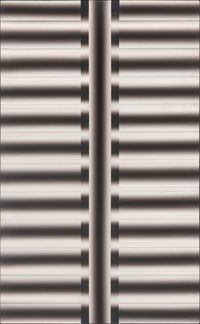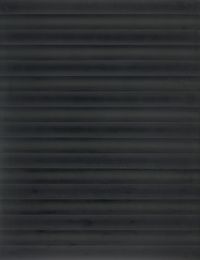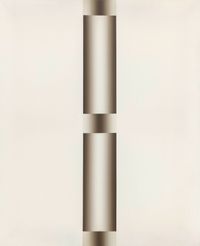Known as ‘the pipe artist’ in the Korean art world for his characteristic pipe motif, Lee Seung Jio drew from the elements of optical illusion to create geometric abstractions that maintain a tension between two-dimensionality and three-dimensionality on the pictorial surface.
Read MoreLee Seung Jio co-founded the artist group Origin with Choi Myoung-Young and Suh Seung-Won in 1962. Unlike their contemporaries associated with Dansaekhwa, who were only presented collectively by curators, the Origin artists exhibited together from the onset. The founding members also shared having been born in the early 1940s—towards the end of Japan’s occupation of Korea—and having studied painting at Seoul’s prestigious Hongik University.
The Origin artists distilled the turbulence of contemporary Korea—then recovering from the Korean war—into paintings with a cool, indifferent approach to abstraction. Repetition and refinement were key in their oeuvre, as reflected in Lee’s use of the cylindrical band motif, also known as ‘pipes’, that usually grow darker towards the edge while the centre remains light. All his paintings are titled Nucleus, sometimes accompanied by numbers denoting the completion date and sequence.
Lee Seung Jio’s early Nucleus paintings exhibit a tendency to employ black and primary colours. In each, the artist worked with cylindrical bands of different sizes and manipulated the distance between them. Nucleus 10 (1968), for example, consists entirely of vertical pipes. A little over a third of the canvas is occupied by a deep navy band, followed by pipes ranging in colour from lighter blues and white to slivers of opaque red, orange, and green, with the remaining half in neutral cream.
Until his death in 1990, Lee Seung Jio continued to experiment with the pipe motif, varying its form, directionality, and opacity to reconcile the illusion of three-dimensionality with the flatness of the canvas. He also introduced a sense of direction and speed to his paintings by employing diagonals such as the darker and light grey pipes that alternate in Nucleus 73-18 (1973). The pipes were also segmented into smaller parts, creating tension in Lee’s geometric abstractions as can be seen in the diamond-patterned interruptions in Nucleus 82-10 (1982) or the horizontal rows of blurry pipes intersected in the middle by a single vertical band in Nucleus 88-50 (1988).
Lee Seung Jio gained early recognition in Korea for his innovative geometric abstractions. In 1968, he was awarded the Grand Prize at the Dong-A International Fine Art Exhibition, followed by the Special Prize in the Korean National Art Exhibition for four consecutive years between 1968 and 1971. Aside from Origin, Lee was a founding member of the Korean Avant-Garde Association in 1969.
Lee Seung Jio first exhibited overseas in the 11th Bienal de São Paulo (1971). His work began to gain further international attention in the 2010s, beginning with the group exhibition ORIGIN (2016) at Perrotin Paris, which was curated by the Korean artist Park Seo-Bo and featured works by the original members of the group. In 2017, Perrotin examined Lee’s oeuvre in the solo show Nucleus at its Hong Kong location, while New York’s Tina Kim Gallery presented a solo exhibition surveying his works, also titled Nucleus, in 2020.
Sherry Paik | Ocula | 2020






